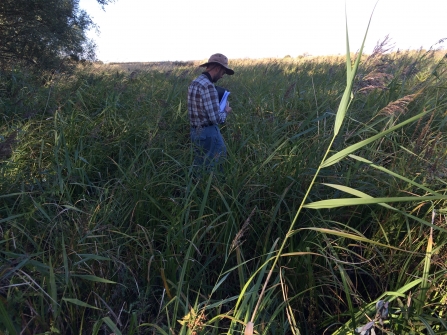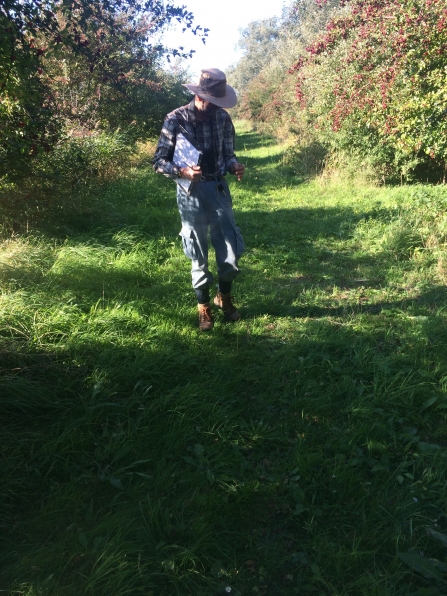Ok, so the title is a bit grandiose as this was a small part of south Lincolnshire, near Spalding. In fact, it was a triangle of land, less than one hectare, nestled in between arable fields, a paddock and a disused railway line.
As the Wildlife Sites Officer, it’s Jeremy’s job to visit these oases and record the species that he finds. So, armed with a species list (that was highly abbreviated and just looked like someone had been having fun with the scrabble tiles), a pencil and Jeremy’s encyclopaedic knowledge, we walked across a couple of fields (with the landowner’s permission) to the slightly sunken triangle of land that had been a small pit, probably sometime in the early 19th century, to take an inventory of what was there.



